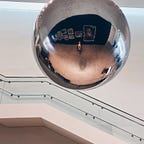A quick primer on user experience design
--
I’ve recently begun intensive study of user experience design, also known as UX design, through an online program called DesignLab. While I’ve been casually dabbling in user-centered design and design thinking methods for a few years, the journey into UX design is just underway.
Understandably, many folks ask — what is UX? Here, I aim to provide a brief overview of UX and how it affects each of us.
What in the world is UX?
If I were explaining UX design to a five year old, my first attempt at a definition might look like this:
“User experience design is where you help people have fun and be happy when using a tool.”
Obviously, this definition is far from complete, but defining UX seems to be an industry-wide struggle. Depending on who you ask, you’re bound to get a different answer.
Two heavyweights in the design world, Don Norman and Jakob Nielsen, define user experience as “encompass[ing] all aspects of the end-user’s interaction with the company, its services, and its products.” DesignLab states that “User Experience (UX) can be considered the entirety of a user’s digital experience surrounding a product, as well as the sum total of the choices that led there.”
User experience design is about curating the manner in which people engage with a product, as well as the reactions and emotions they have upon engaging with it. User experience design grapples with questions like: “How will the flow of people into the stadium affect their satisfaction?” or “How might we offer hints on this page to support users with selecting the right option?” While many associate UX design with digital products, UX applies to in-person experiences, ‘analog’ as well. User experience design is as integral a part of grocery checkout lines and car seats as it is of mobile banking apps.
UX: Swimming in a sea of design fields
UX design sits within a broader ecosystem of design, and is interwoven with fields like interaction design, graphic design, information design, and user interface design. As the Venn diagram below demonstrates, UX design is one element in a much larger set of tools that plays into the development of a given product or service. (For more about some of the nuances of a few digital design disciplines, check out this guide by Fast Company.)
Despite some contention about what user experience design is, it is a discipline with specific methodologies, including research, prototyping, testing, launching, and iterating. User experience design is an ongoing part of any design process, and can look something like this:
How does UX affect you and me?
User experience design matters because its core focus is to integrate product function with user needs. The interface on which you’re reading this article was carefully designed with your needs, attitudes, and behaviors in mind in an effort to maximize your delight, comfort, and understanding. Cars are certainly designed with UX principles in mind ; if user’s end goals of safely driving from one destination to another were not included in the vehicle design process, we might have cars whose controls we wouldn’t know how to interpret.
The magic of UX, though, is that the user isn’t necessarily supposed to notice that it’s happening. Good UX design evokes effortlessness, seamlessness, and flow, and aims to bring about positive interactions in a seemingly natural way. Whether we notice or not, user experience is everywhere — just as it has been for centuries — and will continue to shape our perceptions, our relationships, our productivity, our well-being, and beyond.
